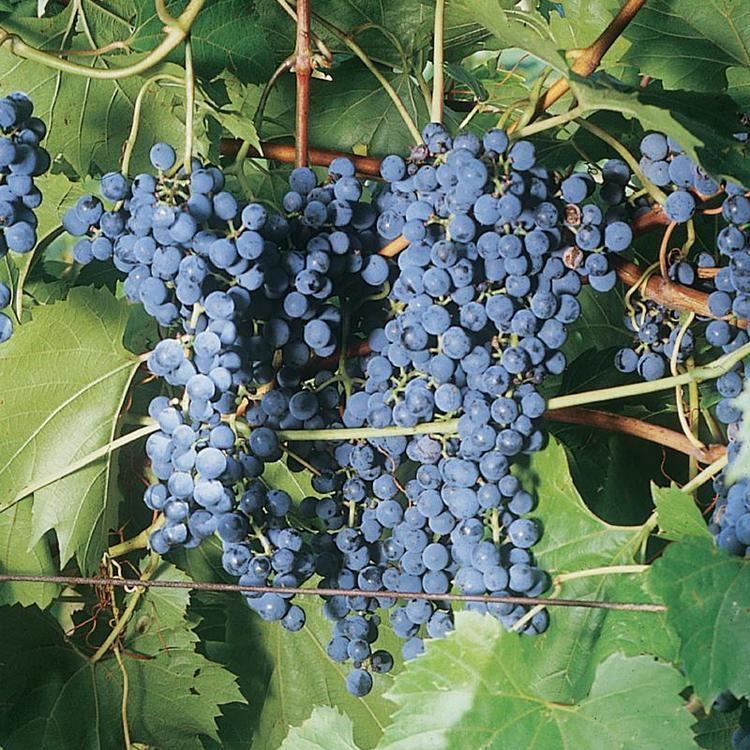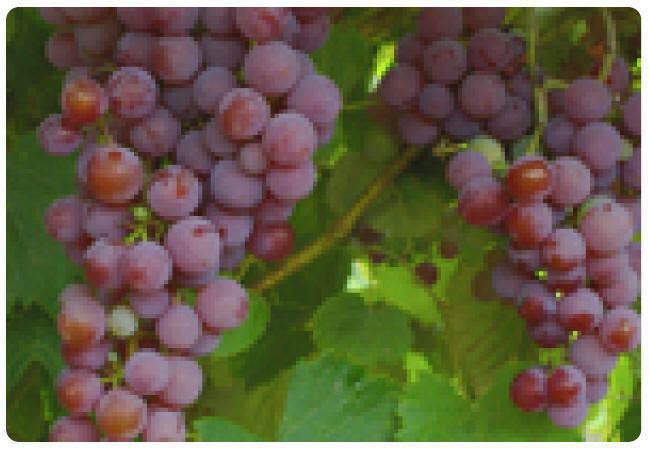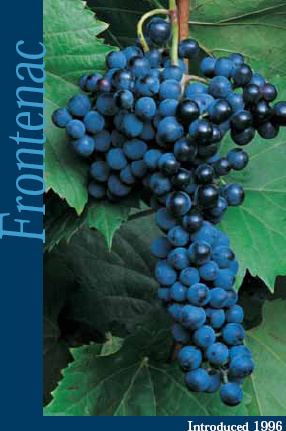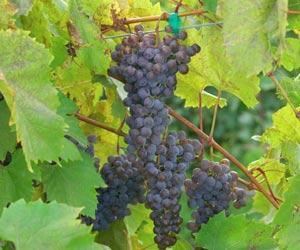Scientific name Vitis 'Frontenac' | Rank Cultivar | |
 | ||
Similar Marquette, St Pepin, Marechal Foch, Edelweiss, De Chaunac | ||
Frontenac is an interspecific hybrid grapevine that is a result of research and cross-breeding by the University of Minnesota. It was grown from a crossing of the complex interspecific hybrid Landot 4511 and a very cold hardy selection of Vitis riparia. It was released in 1996.
Contents

Frontenac gris is a white wine version of Frontenac, introduced in 2003. It started as a single bud mutation of Frontenac, yielding gray (thus named gris) fruit and amber-colored juice. Frontenac blanc will be introduced in 2012 from white fruited mutations found in both Frontenac and Frontenac gris vines in Minnesota and Canada.
Vine and viticulture

The vines produce loose clusters of dark, highly acidic, high sugar berries. Frontenac is quite vigorous, extremely cold hardy (below -30C), highly resistant to downy mildew, and resistant to powdery mildew and botrytis. Frontenac grapes are much smaller than traditional grapes and grow in tight clusters. Frontenac grapes produce a mild grape flavor.
Wine characteristics

Frontenac has been used for the production of dry red wines, rose, as well as for fortified wine in the style of port. The wines produced from Frontenac typically present aromas of cherry and other red fruits.

While producing a pleasing wine, the ripeness of the grapes is difficult to judge from sugar levels alone, and wine-makers are often challenged by its high acidity and atypical pH levels.
Frontenac gris wines present aromas of peach and apricot with hints of enticing citrus and tropical fruit. A brilliant balance of fruit and acidity creates lively, refreshing wines. Unique and complex flavors make this an excellent grape for table, dessert, and ice wines.
Initial trial vinifications of Frontenac blanc indicate that it produces wines that are distinctly different from Frontenac gris in flavor and aroma. The University of Minnesota plans to evaluate and characterize Frontenac blanc lines as they are made available.
Regional production
Although the grape has a very short history, its promise as a wine grape for very cold regions has led to many plantings across the northeastern part of the United States and Canada. The variety is one of the 4 most commonly planted wine grape in Minnesota, with Frontenac gris, La Crescent, and Marquette.
